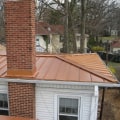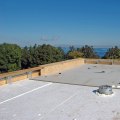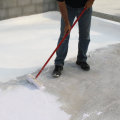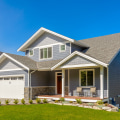Flat roof debate: the best option ultimately comes down to personal preference. Sloped roofs are known to last longer and require less maintenance over time, demonstrating great lifetime value. But if you like the look of flat roofs and expect a low-cost installation, a flat roof is still an excellent choice. Are you looking for a practical storage space for your stairs, solar panels or parabolic antenna? A flat roof is a safer (and more discreet) option for installing these elements and more, without looking like a hassle on a sloped roof. Flat roofs require more maintenance than sloped roofs because of their flat shape, so if you're not interested in doing all the work yourself, it can be costly in the long run.
No one likes to constantly pay for repairs, especially after adverse weather conditions that can damage the roof. Repairs, possibly serious, can increase the cost of maintaining a flat roof. The solution? It is recommended to inspect the flat roof twice a year, preferably in spring and autumn. After all, prevention is better (or cheaper) than cure, right? Arrange to remove debris or leaves, as they can prevent proper drainage. Look for any signs of damage or leaks immediately after the storms and, if necessary, have a structural surveyor inspect the roof.
It makes a flat roof very affordable for both installation and maintenance. Labor is cheaper due to the lower risk when installing a flat roof. Installing flat roofs is faster and easier. There is less damage and repair costs over the life of the roof. Installing elements such as solar panels, which save electricity, and satellites, makes repairs and cleaning of gutters less expensive and easier to carry out on flat roofs.
Another advantage of flat roofs is that they can be more energy efficient than sloped roofs. This is due to the type of insulation used. Sloped roofs generally use fiberglass insulation, which can be less effective than the spray foam insulation often used on flat roofs. Spray foam insulation forms a seal around your home, preventing heat from escaping in winter and keeping you cool in summer. This can result in significant savings on your energy bills. In warmer climates that experience extended periods of sun exposure, an energy-saving white roof membrane can help the homeowner recover thousands of dollars in energy savings.
Flat roofs are also safer and more accessible than sloped roofs. With a higher sloped roof, more equipment is needed to access the roof and there is a greater risk of injury. It's much easier to walk on a flat roof, and you won't need as much equipment to maintain it. This makes it safer for your roofing contractor during routine maintenance and means it will cost you less to repair your roof. Another great advantage of flat roofs is that they can create usable outdoor space.
If your house lacks square footage, a flat roof can be the perfect place to add a terrace or roof garden. This extra outdoor space can be a great place to entertain, relax, or even work from home. Our customers have tasked our experienced team at Alte Exteriors to help them build additional outdoor space with something as simple as a balcony or as complex as a jacuzzi area equipped with a large entertainment space. Commercial buildings often use their flat roofs to store HVAC units or other equipment out of sight, but this extra space can be used as you see fit. Probably the biggest disadvantage of flat roofs is that they require more maintenance and maintenance than sloped roofs because they are more susceptible to damage. Although they are not completely flat, they sometimes have drainage problems, which can lead to leaks.
Even bird droppings can cause problems if not cleaned from the roof regularly, as they are extremely acidic and can degrade roof material. This is true for all types of roofs, but it's a bigger problem for flat roofs because they allow more space for birds to hang out. If you're building a modern house with a flat roof, you're likely to choose between EPDM, TPO, or PVC membrane roofs, or a liquid-applied roof system. This limited selection can make it harder to find the right roofing material for your home, and it also means you'll have fewer options if you ever need to replace your roof. This is because the weight of the roof can cause larger flat roofs to sag or collapse if they are not properly supported. For this reason, most commercial buildings with flat roofs have a support system to help distribute roof weight evenly. You probably don't have an attic if you have a flat roof, so you'll have to find another place to store Christmas decorations and other items you only use from time to time.
This lack of storage may be only a minor inconvenience for some homeowners, but it can be a major problem for others - especially if you don't have any other storage space in your home. Another merit of a flat roof is that it helps give your home a pleasant glow, especially when it's built with creativity and aesthetics. Creatives such as having a roof garden add more beauty and glamor to the building. While they have some drawbacks, there are also several advantages that make flat roofs a great choice for many homeowners. The absence of slanted overhangs on flat roofs allows better access to more natural light in your home. A flat roof covering an extension or garage in a house is the perfect place for a roof terrace, allowing you to use space that would be wasted with a sloped roof and providing a prime spot to enjoy outdoor views. Flat and pitched roofs have their advantages and disadvantages, so consider your options and the long-term costs of both. The depth of the structure needed to build a flat roof usually matches the amount of insulation you want to install anyway.
Modern flat roofs offer many advantages that make them worth considering when deciding on what type of covering best suits your needs.



